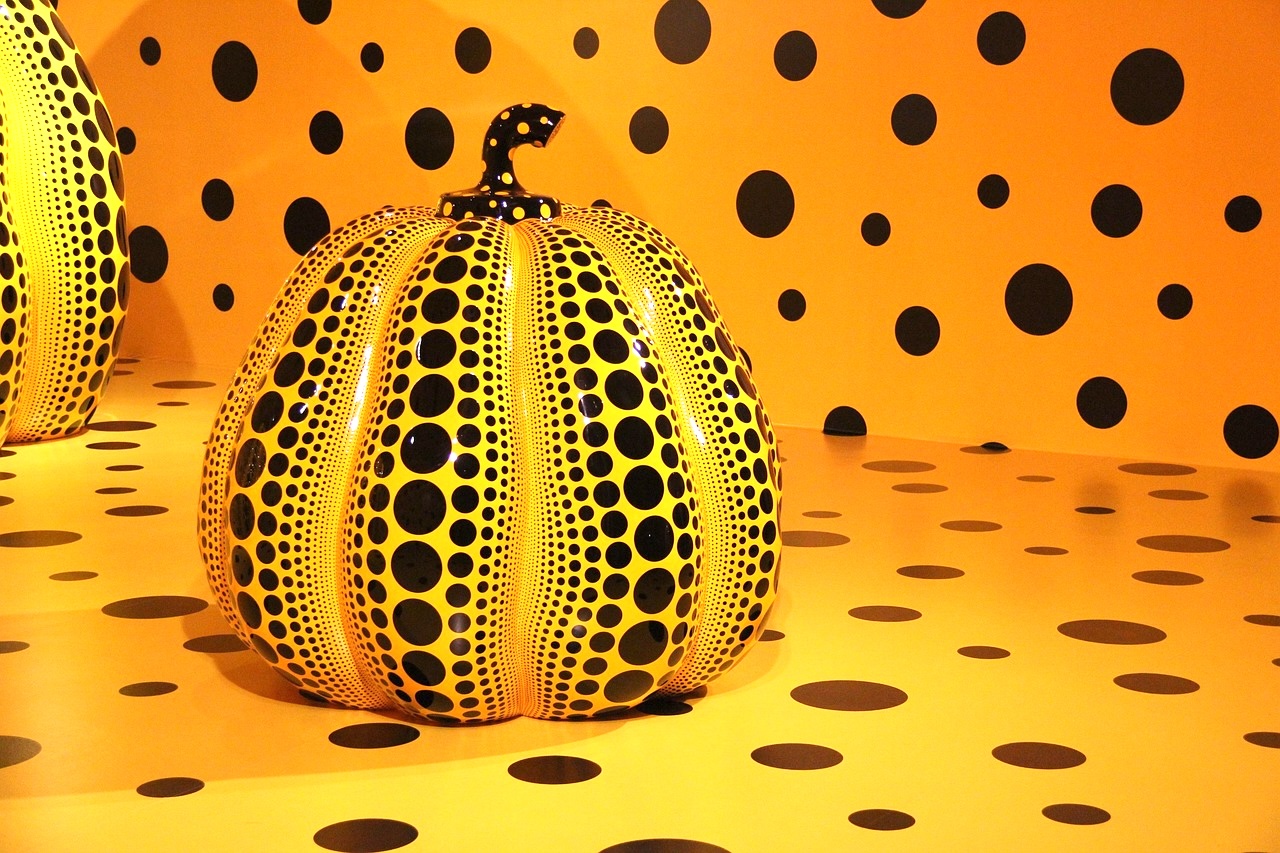Hey there, young artists! Have you ever noticed how dots can be used to create some amazing art? From colorful patterns to beautiful pictures, dots are more than just simple marks—they can tell stories, create texture, and even make us feel different things. Today, we’re going to take a fun trip around the world and learn about three cool ways artists use dots in their work. We’ll be exploring artists across time, places, and cultures – Yayoi Kusama‘s dot explosions, Georges Seurat’s pointillism, and Australian aboriginal dot painting. Ready? Let’s dive in!
1. Yayoi Kusama: The Queen of Dots!

Yayoi Kusama is an artist from Japan who is famous for using lots and lots of dots in her art. Imagine a whole room full of mirrors and glowing dots—sounds cool, right? Kusama’s work is often super colorful and full of repeating patterns. She even painted polka dots on furniture, walls, and sculptures! For Kusama, dots are not just fun shapes—they help her express her feelings and connect to the world around her.
She says that the dots help her feel like she is part of something bigger than herself. Her art can make us think about infinity, or how we are all connected, like tiny little dots in a huge universe!
2. Pointillism: Creating Pictures with Tiny Dots
Pointillism is a special way of painting where artists use small dots of color to create bigger pictures. A famous artist named Georges Seurat started this style in the 1880s. Instead of mixing colors on a palette, pointillist artists place little dots of paint next to each other on the canvas. When you look at the painting from far away, all the dots blend together to create a full image. It’s like magic!
For example, Seurat’s painting A Sunday Afternoon on the Island of La Grande Jatte is full of colorful dots, and it looks like a peaceful scene in the park. But if you look closely, you can see each tiny dot up close.
3. Aboriginal Dot Painting: Telling Stories with Dots
Aboriginal dot painting comes from the Aboriginal peoples of Australia. These artists use dots to tell stories about their culture, nature, and the dreamtime (the ancient stories of creation). Aboriginal dot paintings often have beautiful patterns and bright colors, and each dot has a special meaning. Sometimes, the dots show animals, people, or important places, and sometimes they are used to map out areas of land.
These paintings are not just pictures—they are a way of sharing knowledge and connecting to the land and ancestors. The dots are carefully placed to tell stories passed down for generations.
How Are These Dots the Same?
Even though Kusama, pointillism, and Aboriginal dot painting look different, they all use dots as their main feature. Here’s how they’re the same:
- Dots create patterns and shapes. In all three styles, dots come together to form a bigger picture. They can make something simple (like a dot) turn into something much larger and more complex!
- Dots help us focus. In each of these art forms, the dots are a way to draw attention to important ideas, like infinity, the beauty of nature, or ancient stories.
How Are They Different?
While the dots are similar, the ways they are used are different:
- Yayoi Kusama’s dots are often used to create patterns that fill entire rooms. Her dots can feel like they’re endless, and they might make you feel a little like you’re lost in a dream or a fun, polka-dotted world.
- Pointillism uses tiny dots of color to build up detailed pictures. The dots in pointillism mix together when you look at them from far away, making beautiful, realistic images like people or landscapes.
- Aboriginal dot paintings tell stories about the land, animals, and ancestors. The dots are used in special patterns that have deep meaning and are often part of a culture’s long history.
Why Are Dots So Powerful?
Dots might seem simple, but when you use them in art, they can show all sorts of emotions, ideas, and stories. They remind us that even the smallest things can come together to create something amazing. Whether it’s Kusama’s endless dots, Seurat’s colorful pointillism, or the meaningful patterns in Aboriginal art, dots have the power to transform a canvas, a wall, or even the world around us.
Your Turn!
Next time you pick up a paintbrush or a marker, why not try making your own dot artwork? You could make a colorful pattern like Kusama, paint a beautiful landscape with tiny dots like a pointillist, or tell your own story using dots just like Aboriginal artists! The possibilities are endless when you work with dots, so let your imagination run wild.
Happy dotting!
More dot art activities to explore:
Exploring the Magic of Dot Painting with Complementary Colors

































